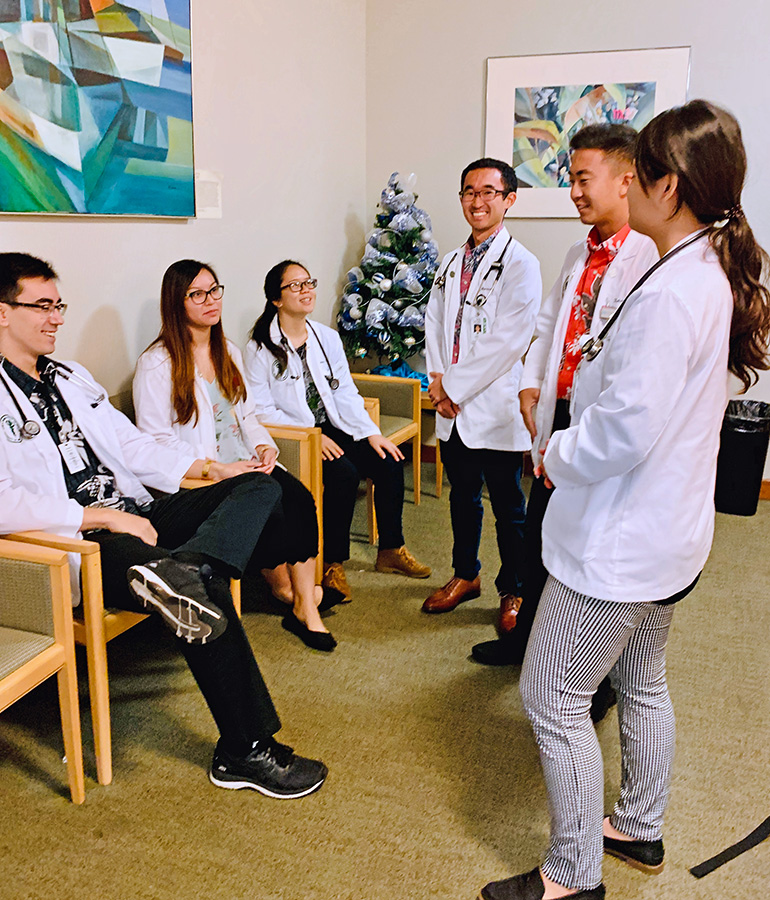Prepare for participation in simulation, an exciting active-learning environment. Learn about student and facilitator roles, patient scenarios, and debriefing.
NOTE: The photo’s and video’s were taken prior to COVID-19 pandemic. You will continue to follow all current safety measures when participating in simulation sessions. Please check with your facilitator if you have any questions or are ill and cannot participate in simulation. We appreciate everyone’s efforts to maintain a safe learning environment. Mahalo!
Welcome to SimTiki Simulation Center! Scenarios are opportunities for students to practice medicine in a safe environment. It is a good opportunity to try out your skills at the bedside. Simulation is a safe space to make mistakes! Unlike standardized patients, manikins can be programmed to have different cardiac rhythms, airway events and presentations like cyanosis or pupil changes. We encourage you to have fun in the challenge, engaging in the medical environment, and suspending your disbelief to practice what you learned in your tutorial group.
Most scenarios are not graded. The facilitator will inform students if the scenario is a test.

Gather in 2nd Floor Telehealth Lobby
The facilitator will guide student learning through 1) scenario participation; 2) skill development and practice; 3) reflection to recognize gaps and opportunities to improve clinical problem solving; 4) apply new knowledge.
The student is expected to 1) suspend disbelief and embrace the simulated environment as an imperfect clinical representation with great opportunity for learning; 2) actively participate in scenarios; 3) engage in discussion and ask questions; and 4) complete post course surveys.
Simulation begins with an orientation to the day’s activities
During orientation before the scenario, students receive an introduction to the manikin, simulation environment and how simulation scenarios work.
After the course, students log in to Simtiki login and complete the post course survey and facilitator evaluation. This helps to improve the simulation center.
Mahalo!